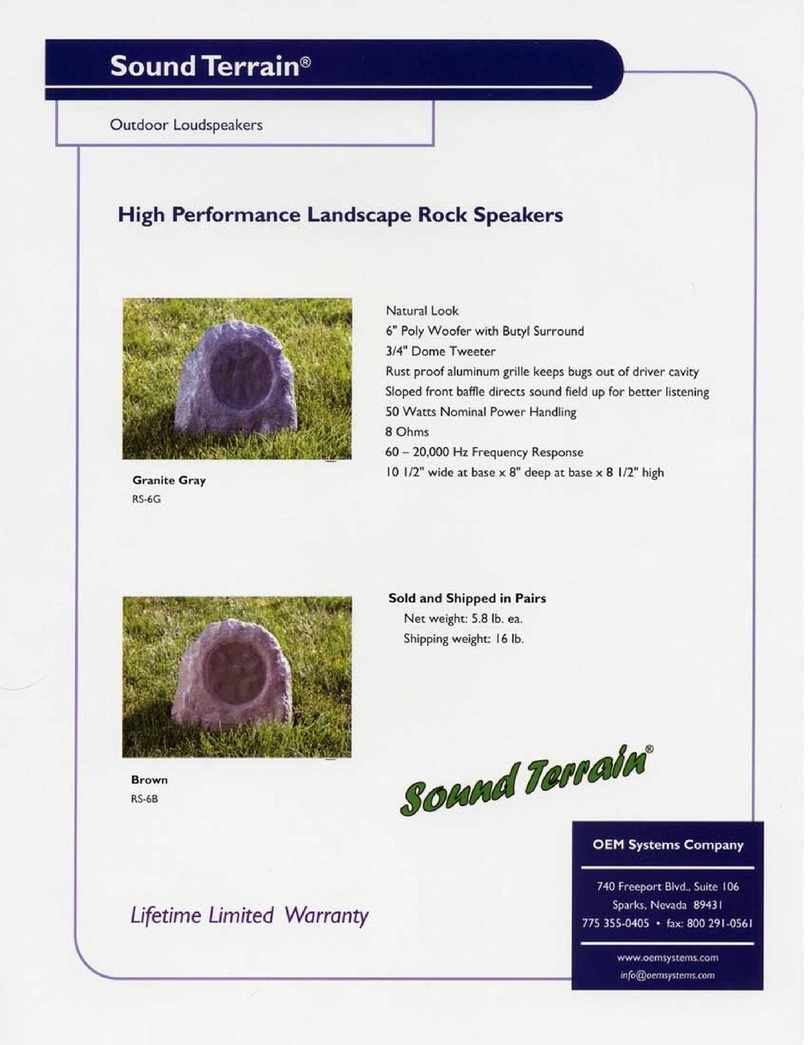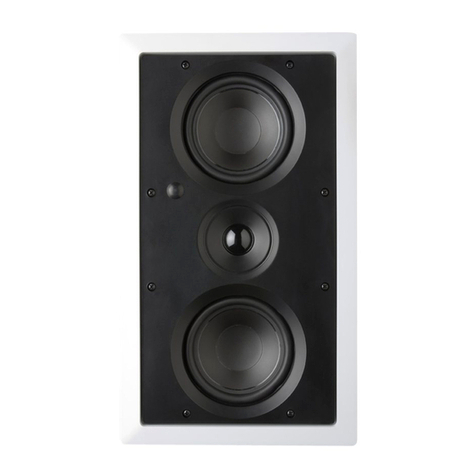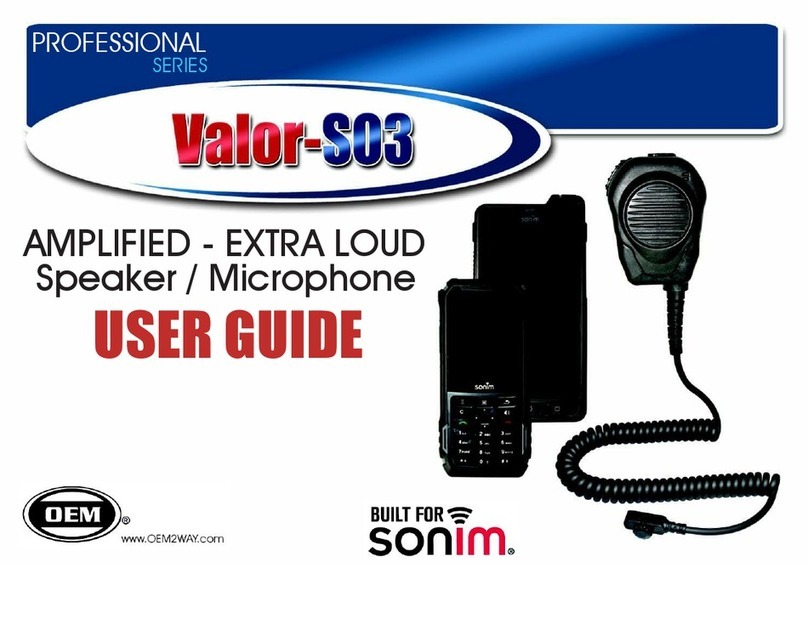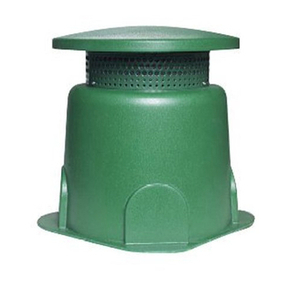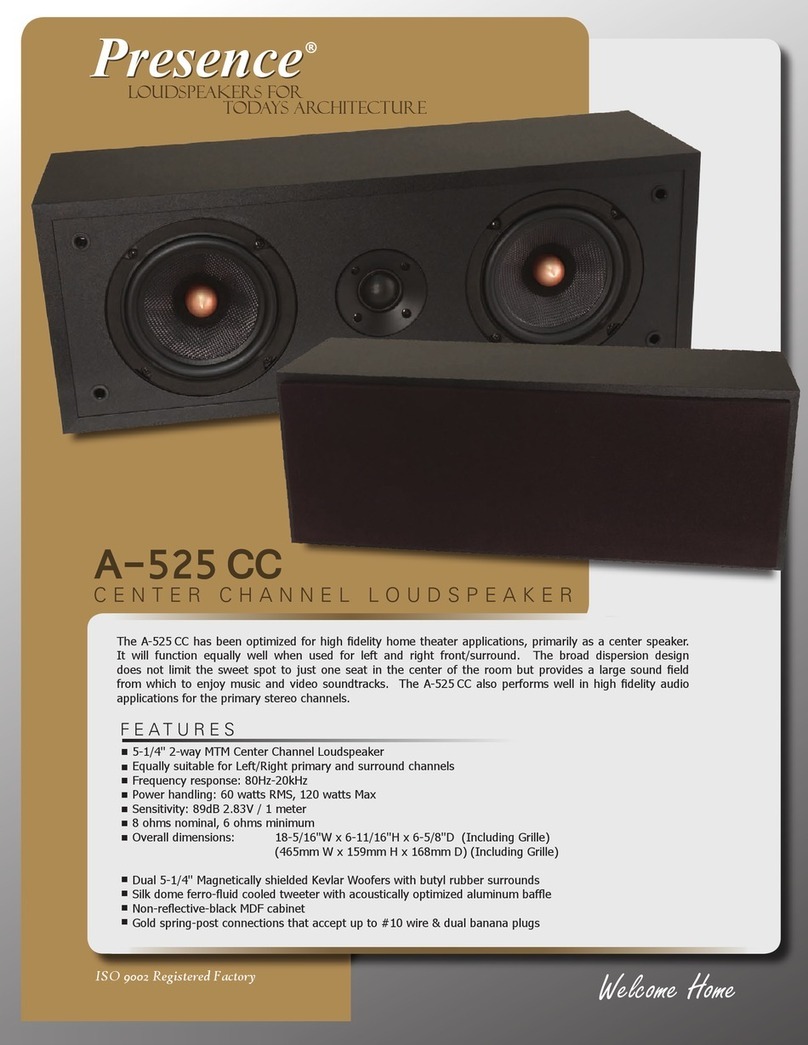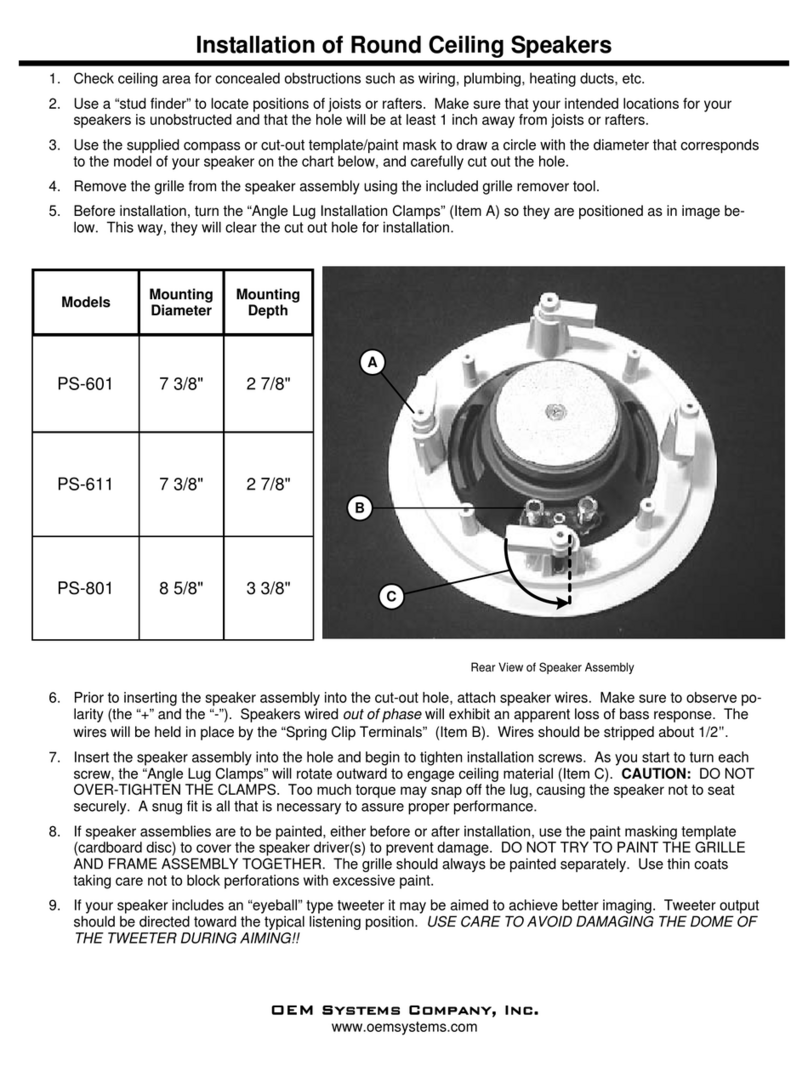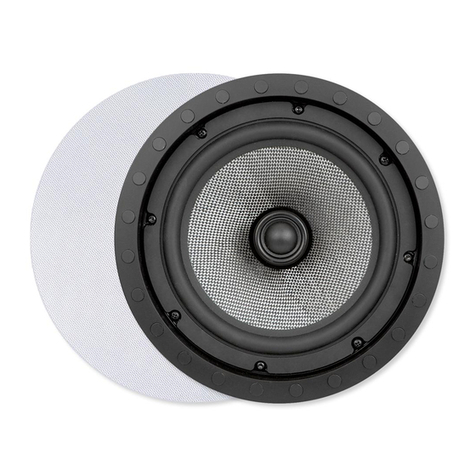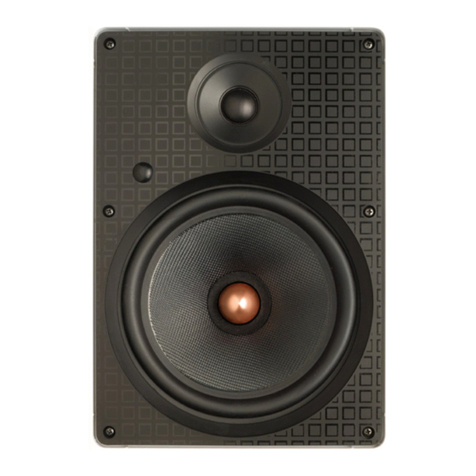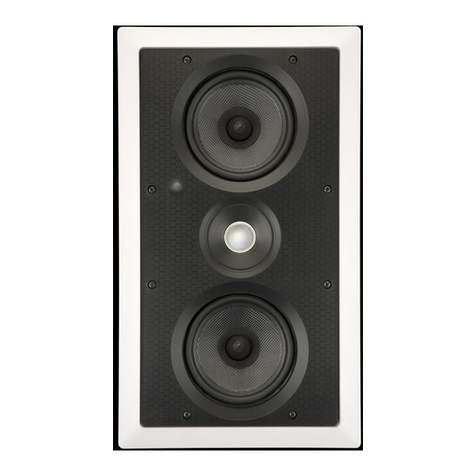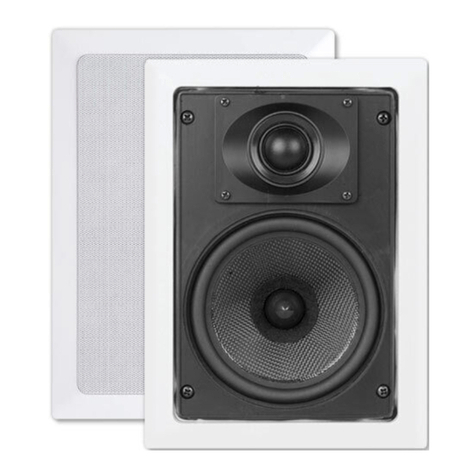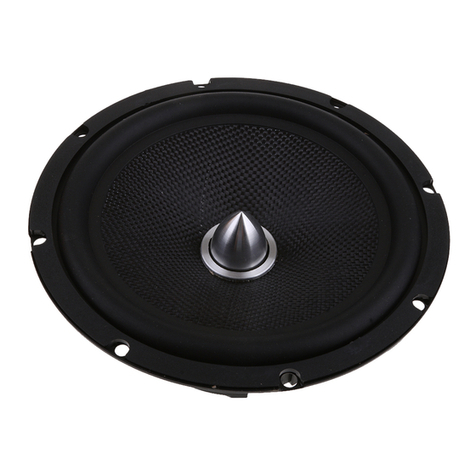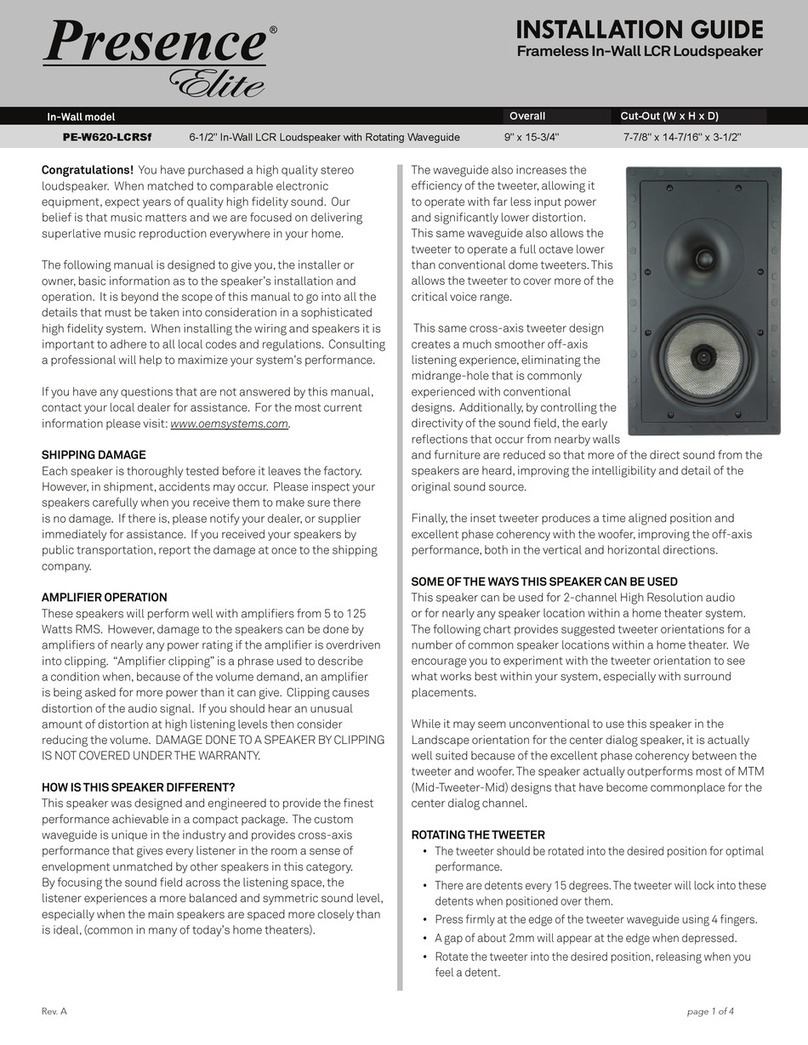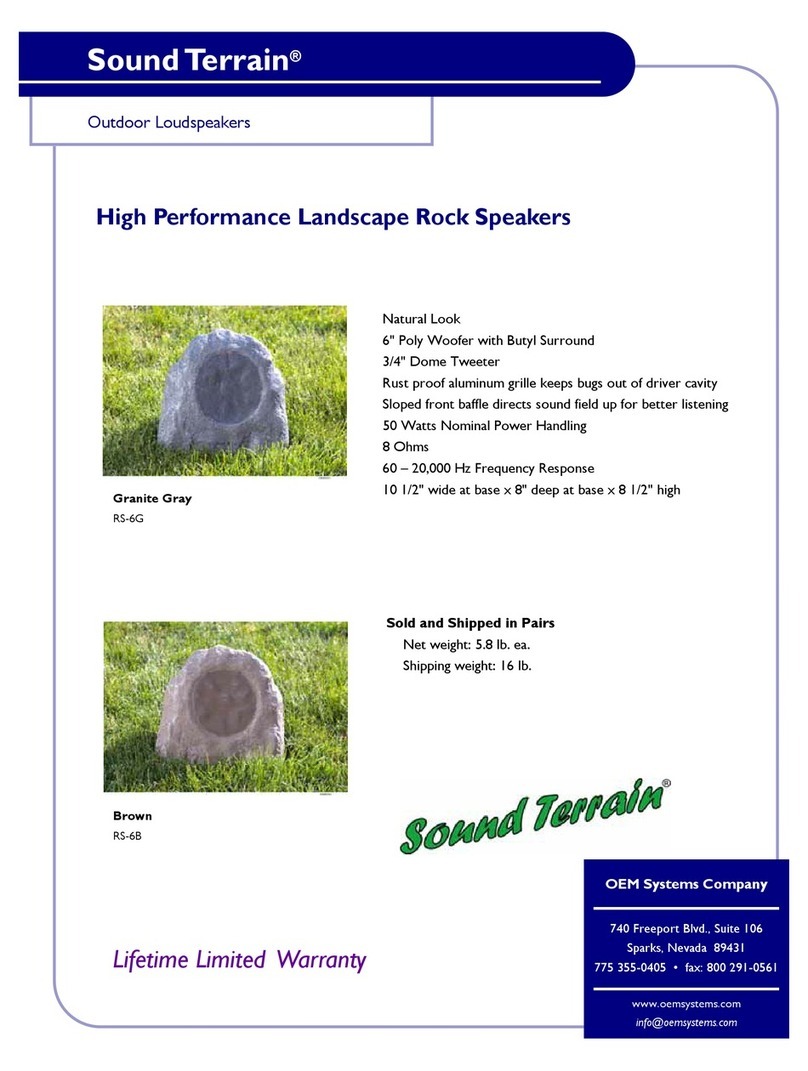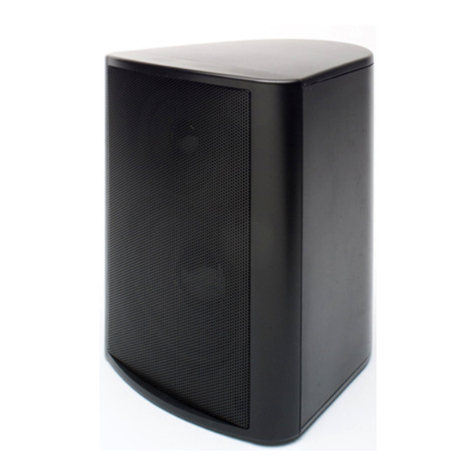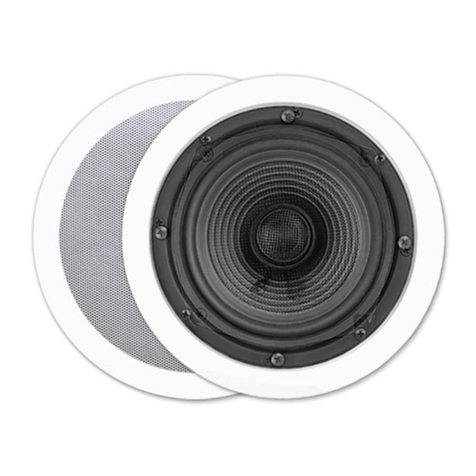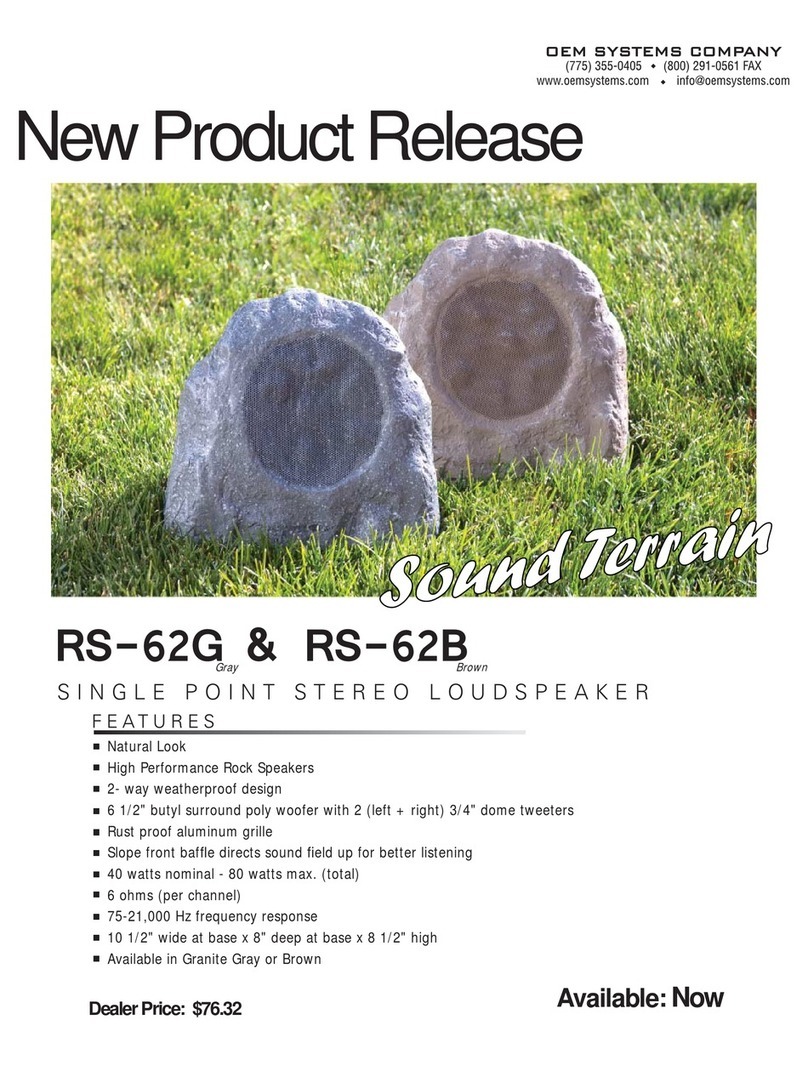
INSTALLATION GUIDE
Overall (W x H) Cut-Out (W x H x Depth)
A-650 9-1/16"x12-3/4" 8"x11-3/4"x3-1/4"
A-820 10-5/8"x14-5/8" 9"x13"x3-1/4"
A-830 10-5/8"x14-5/8" 9"x13"x31/4"
Rectangular In-Wall Loudspeakers
page 1 of 2Rev. B
Congratulations! You have purchased a high quality stereo
loudspeaker. When matched to comparable electronic
equipment, expect years of quality high delity sound.
Our belief is that music matters and we are focused on
delivering superlative music reproduction everywhere in
your home.
The following manual is designed to give you, the installer
or owner, basic information as to the speaker’s installation
and operation. It is beyond the scope of this manual to go
into all the details that must be taken into consideration in
a sophisticated high delity system. When installing the
wiring and speakers it is important to adhere to all local
codes and regulations. Consulting a professional will help
to maximize your system’s performance.
If you have any questions that are not answered by this
manual, contact your local dealer for assistance. For the
most current information please visit:
www.oemsystems.com.
GENERAL DESCRIPTION
These speakers have specially designed woofers with
linear long throw butyl rubber surrounds for long life and
superior damping. Pivoting Dome Tweeters are utilized for
excellent high frequency dispersion throughout your entire
listening environment.
SHIPPING DAMAGE
Each speaker is thoroughly tested before it leaves the
factory. However, in shipment, accidents may occur.
Please inspect your speakers carefully when you receive
them to make sure there is no damage. If there is, please
notify your dealer, or supplier immediately for assistance.
If you received your speakers by public transportation,
report the damage at once to the shipping company.
AMPLIFIER OPERATION
These speakers will perform well with ampliers from 5
to 125 Watts RMS. However, damage to the speakers can
be done by ampliers of nearly any power rating if the
amplier is overdriven into clipping. “Amplier clipping”
is a phrase used to describe a condition when, because of
the volume demand, an amplier is being asked for more
power than it can give. Clipping causes distortion of the
audio signal. If you should hear an unusual amount of
distortion at high listening levels then consider reducing
the volume. DAMAGE DONE TO A SPEAKER BY CLIPPING IS
NOT COVERED UNDER THE WARRANTY.
SPEAKER PLACEMENT
Placement of In-wall Speakers should be carefully
considered. Please contact a professional for assistance
if you are uncomfortable with the planning or installation
process. Ideally, the speakers should be located where
they will provide the best possible sound and ease of
installation. It is beyond the scope of this publication to
discuss all of the various aspects of speaker placement
but here are some helpful suggestions.
For more bass, place the speakers between 18 and 36
inches from an adjacent wall as measured to the center
of the speaker. Avoid placing the speakers less then 18
inches from an adjacent wall. When placing speakers near
a corner, avoid locating them an equal distance from the
two adjacent srfaces.
When used in a home theater the front left and right
speakers should be separated from each other a distance
of 0.8 to 1.2 times the seating distance (assuming they are
on the same plane as the center speaker). For example,
if the seating position is 10 feet from the viewing screen
and/or center speaker then ideally the distance between
the left and right speakers should be somewhere between
8 and 12 feet, (10 x 1.2ft = 12ft). Tweeters may be aimed
toward the listening area by pressing the lens area along
side the tweeter dome.
WIRING
To achieve maximum performance we recommend that
the speaker cable be at least 16 gauge or larger for runs
over 50 feet (15m) and that the cable be double insulated.
A CL-2 or CL-3 rated cable may be required. Check local
codes. “Zip cord,” which is single insulated and is often
made with clear insulation, should be avoided as it is not
as durable. Allow about 2½ feet (0.8m) of free cable at the
speaker cut-out and sufcient length at the other end to
reach the electronics. Having to add extra cable later can
be tedious and time consuming.
Avoid bundling speaker cables parallel to electrical cables
for extended lengths. Though the impedance is low and
the likelihood of interference low, this may help reduce
hum and RF interference. When securing the cable, use
care not to staple or nail through the electrical conductors.
Doing so could result in a short that might damage the
electronics.
When connecting your speakers, make sure proper
polarity (phasing) is maintained. Simply put, this means
ensuring the same wire which is connected to the positive
Presence 2-Piece Baffle & Frame
For: 6-1/2" & 8" In-Wall Models
